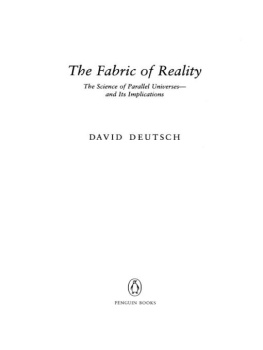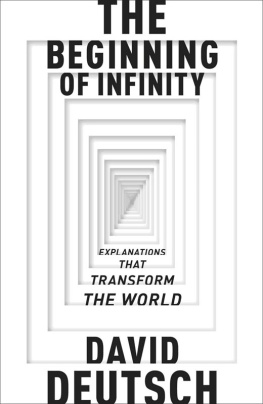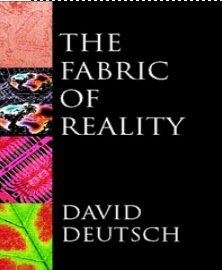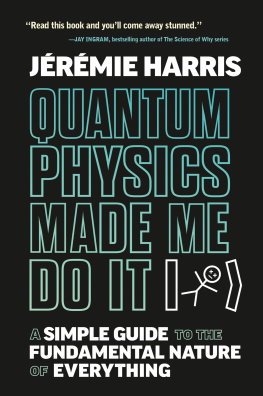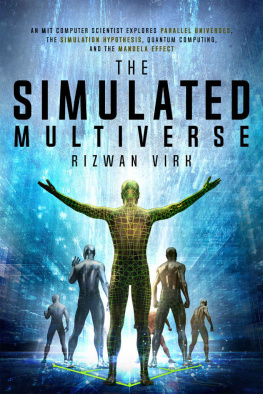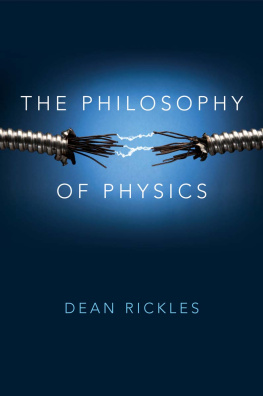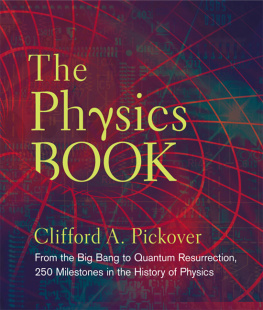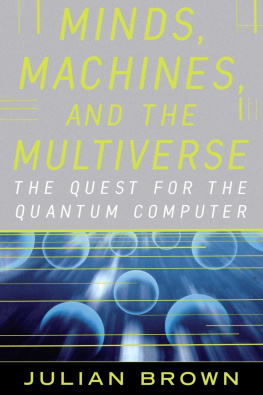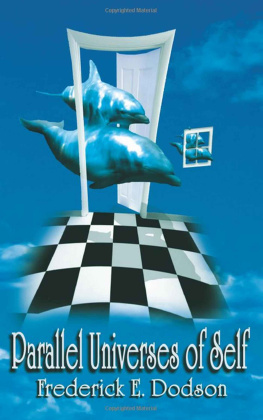Table of Contents
PENGUIN BOOKS
THE FABRIC OF REALITY
Born in Haifa, Israel, David Deutsch was educated at Cambridge University and Oxford University. He is a member of the Quantum Computation and Cryptography Research Group at the Clarendon Laboratory, Oxford University. His papers on quantum computation laid the foundations for that field, and he is an authority on the theory of parallel universes.
Praise for The Fabric of Reality
Full of refreshingly oblique, provocative insights... Quantum mechanics, Deutsch insists, must be taken not just as a predictive tool, but as an explanation for how the world really works.
George Johnson, The New York Times
David Deutsch is a deeply knowledgeable professional physicist who has no truck with mystical false analogies... [he] has become the most eloquent spokesman of the Many Universes interpretation of quantum behavior, and [The Fabric of Reality] makes this theme coherent with some well-thought-out views of epistemology, of biological evolution, and of the theory of computation.
Richard Dawkins
In the library of physics for laypeople, Deutschs book is unique. Correction: it is multiversal, existing in innumerable universes that Deutsch argues exist alongside the real universe that people perceive. Explaining that, and persuading the reader of its scientific truth, makes this work unique... the confidence with which Deutsch presents his views, and the absence of condescension in his style, accesses nonscientists to his seemingly alien world(s).
ALA Booklist
David Deutsch is one of Britains most original thinkers. In this major work he confronts the deepest questions of existence head on, challenging traditional notions of reality with a new worldview that interweaves physics, biology, computing, and philosophy. I havent been so inspired since I read Douglas Hofstadters Godel, Escher, Bach.
Paul Davies, author of About Time: Einsteins Unfinished Revolution
Deutsch provides a model of reality that is as provocative as it is complex.... An intellectually stimulating read for the science-literate and motivated layperson.... The author exhibits... a thorough knowledge of his subject matter.... In a field where scientific inquiry challenges not only our imagination but basic assumptions about our physical world, this volume provides the essential information needed for future debates.
Publishers Weekly
PENGUIN BOOKS
Published by the Penguin Group
Penguin Group (USA) Inc., 375 Hudson Street, New York, New York 10014, U.S.A.
Penguin Books Ltd, 80 Strand, London WC2R ORL, England
Penguin Books Australia Ltd, 250 Camberwell Road, Camberwell, Victoria 3124, Australia
Penguin Books Canada Ltd, 10 Alcorn Avenue, Toronto, Ontario, Canada M4V 3B2
Penguin Books India (P) Ltd, 11 Community Centre, Panchsheel Park, New Delhi 110 017, India
Penguin Books (N.Z.) Ltd, Cnr Rosedale and Airborne Roads, Albany, Auckland, New Zealand
Penguin Books (South Africa) (Pty) Ltd, 24 Sturdee Avenue,
Rosebank, Johannesburg 2196, South Africa
Penguin Books Ltd, Registered Offices: 80 Strand, London WC2R ORL, England
First published in Great Britain by Allen Lane The Penguin Press,
Penguin Books Ltd. 1997
First published in the United States of America by Allen Lane The Penguin Press,
an imprint of Viking Penguin, a member of Penguin Putnam Inc., 1997
Published in Penguin Books 1998
Copyright David Deutsch, 1997 All rights reserved
THE LIBRARY OF CONGRESS HAS CATALOGUED
Deutsch, David.
The fabric of reality / David Deutsch.
p. cm.
Includes bibliographical references and index.
ISBN : 978-1-101-55063-2
1. Reality. 2. Physics Philosophy. 3. Life. 4. Cosmology. I. Title.
QC6.4.R42D48 1997
530.01 dc21 97-6171
http://us.penguingroup.com
Dedicated to the memory of Karl Popper, Hugh Everett and Alan Turing, and to Richard Dawkins. This book takes their ideas seriously.
Preface
If there is a single motivation for the world-view set out in this book, it is that thanks largely to a succession of extraordinary scientific discoveries, we now possess some extremely deep theories about the structure of reality. If we are to understand the world on more than a superficial level, it must be through those theories and through reason, and not through our preconceptions, received opinion or even common sense. Our best theories are not only truer than common sense, they make far more sense than common sense does. We must take them seriously, not merely as pragmatic foundations for their respective fields but as explanations of the world. And I believe that we can achieve the greatest understanding if we consider them not singly but jointly, for they are inextricably related.
It may seem odd that this suggestion that we should try to form a rational and coherent world-view on the basis of our best, most fundamental theories should be at all novel or controversial. Yet in practice it is. One reason is that each of these theories has, when it is taken seriously, very counter-intuitive implications. Consequently, all sorts of attempts have been made to avoid facing those implications, by making ad hoc modifications or reinterpretations of the theories, or by arbitrarily narrowing their domain of applicability, or simply by using them in practice but drawing no wider conclusions from them. I shall criticize some of these attempts (none of which, I believe, has much merit), but only when this happens to be a convenient way of explaining the theories themselves. For this book is not primarily a defence of these theories: it is an investigation of what the fabric of reality would be like if they were true.
Acknowledgements
The development of the ideas in this book was greatly assisted by conversations with Bryce DeWitt, Artur Ekert, Michael Lockwood, Enrico Rodrigo, Dennis Sciama, Frank Tipler, John Wheeler and Kolya Wolf.
I am grateful to my friends and colleagues Ruth Chang, Artur Ekert, David Johnson-Davies, Michael Lockwood, Enrico Rodrigo and Kolya Wolf, to my mother Tikvah Deutsch, and to my editors Caroline Knight and Ravi Mirchandani (of Penguin Books) and John Woodruff, and especially to Sarah Lawrence, for their thorough, critical reading of earlier drafts of this book, and for suggesting many corrections and improvements. I am also grateful to those who have read and commented on parts of the manuscript, including Harvey Brown, Steve Graham, Rossella Lupaccini, Svein Olav Nyberg, Oliver and Harriet Strimpel, and especially Richard Dawkins and Frank Tipler.
I
The Theory of Everything
I remember being told, when I was a small child, that in ancient times it was still possible for a very learned person to know everything that was known. I was also told that nowadays so much is known that no one could conceivably learn more than a tiny fraction of it, even in a long lifetime. The latter proposition surprised and disappointed me. In fact, I refused to believe it. I did not know how to justify my disbelief. But I knew that I did not want things to be like that, and I envied the ancient scholars.
It was not that I wanted to memorize all the facts that were listed in the worlds encyclopaedias: on the contrary, I hated memorizing facts. That is not the sense in which I expected it to be possible to know everything that was known. It would not have disappointed me to be told that more publications appear every day than anyone could read in a lifetime, or that there are 600,000 known species of beetle. I had no wish to track the fall of every sparrow. Nor did I imagine that an ancient scholar who supposedly knew everything that was known would have known everything of that sort. I had in mind a more discriminating idea of what should count as being known. By known, I meant

